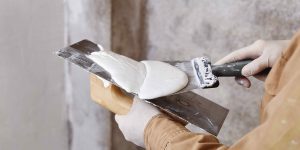 If you’re building a home, many decisions need to be made. One of those decisions is what type of material will be used for the walls. Drywall or plaster? With so many options out there for each, it can be tough to know what’s best for your home. In this article, we will talk about the benefits of each and help you decide which one is right for your situation before you call a professional contractor. Plaster Installation in Minneapolis MN
If you’re building a home, many decisions need to be made. One of those decisions is what type of material will be used for the walls. Drywall or plaster? With so many options out there for each, it can be tough to know what’s best for your home. In this article, we will talk about the benefits of each and help you decide which one is right for your situation before you call a professional contractor. Plaster Installation in Minneapolis MN
Durability
Plaster is a natural product. It’s made from lime, sand, and water that have been mixed and allowed to mature. This makes it durable unlike drywall, which is made of gypsum board layered with paper reinforcement and paper face sheets, plaster can withstand heavy use without showing signs of wear too soon.
Plaster also offers you the ability to repair it if something happens during installation or later on when you’ve got your home decorating down pat. While drywall cannot be painted over due to its paint-resistant surface treatment, plaster’s porous nature allows you to apply any color or pattern of paint directly onto its surface to achieve a final effect that looks like its been done by a professional contractor!
Cost-Effectiveness
The cost of materials, labor, and energy is a major factor in determining the overall cost of plaster installation. For example, you’ll need to purchase more drywall material for a finished room with drywall than you would for one with plaster. Newer-style gypsum wallboard is considerably less expensive than traditional clay-based plasters but still costs substantially more than plasterboard because it’s manufactured from a combination of gypsum (a mineral) and water. The cost of energy varies depending on what type of heating system is used in your house or apartment building. Some systems use fossil fuels while others rely on electricity generated by solar panels or wind turbines.
Energy efficiency is another important factor when estimating the long-term costs associated with installing new floors or walls. These items can help reduce your carbon footprint by lowering your monthly utility bills year after year without compromising comfort levels too much during winter months!
Fire Resistance
Plaster is a fire-resistant material. It has a high fire rating and can be used to create walls and floors that are resistant to flames. Plaster is used in commercial buildings, warehouses, homes, and other structures where protection from fire is needed.
The plastering process includes creating a non-combustible base for the plaster to adhere to which makes it an excellent choice for covering wood or steel beams in commercial buildings or homes with wooden beams.
Sound Dampening Properties
Plaster is a natural sound absorber and barrier. Plaster absorbs sound through its structure, making it great for rooms where you want to be quiet or for areas where you need to dampen sound.
Plaster also acts as an excellent reflector, which means that it can be used in spaces like studios and theaters where sound needs to bounce off the walls instead of being absorbed by them.
Lastly, plaster has some blocking properties that make it useful when you want a certain amount of ambient noise while still keeping things private.
Environmentally Responsible
Plaster is a natural material, made from sand, lime, and water. It has been used for thousands of years because it’s completely biodegradable. It’s important to look for a contractor who takes pride in plaster installations that are both beautiful and kind to the environment.
After the installation process is complete, there’s no need to worry about any leftover waste from your project because plaster can simply be swept up or vacuumed away.
Adding Character to Your Home
Plaster is a classic material. If you’re not familiar with it, you may wonder what we’re talking about when we say plaster. Plaster is made of sand, lime, and water—and it’s used on walls and ceilings to give your home character.
It gives your home an authentic touch by reflecting its age. Most homes built before 1950 have some form of traditional construction—and most likely this includes some form of plaster that has been painted over time but still exists beneath layers upon layers of paint job after the paint job.
Variety of Finishes
Plaster can also be finished in a variety of ways, depending on what you’re looking for. You can have it painted or left natural. It can be polished to have a smooth finish that resembles marble, or it can be left with textured grooves and bumps just like traditional plaster walls.
Plaster Installation in Minneapolis MN
So, when you’re thinking about what kind of wall covering to install in your home, consider plaster. Not only is it beautiful and durable, but it’s also environmentally responsible and cost-effective. If you want to add character to your home or make it more soundproof, then plaster is the way to go! Reach out to your local contractor to learn more about plaster installation. We are Home Drywall and Painting in Minneapolis, Minnesota, and would love to help you with your next home remodeling project. Give us a call today!
